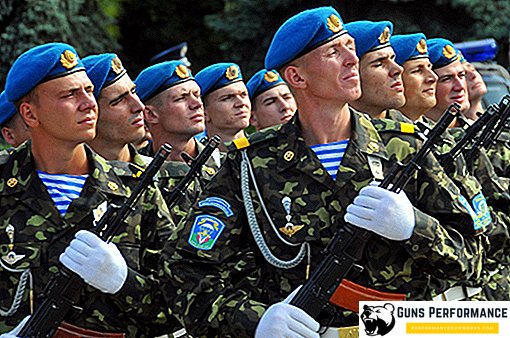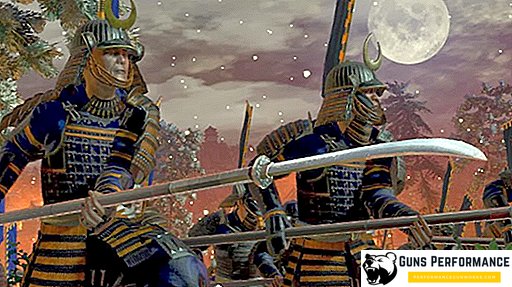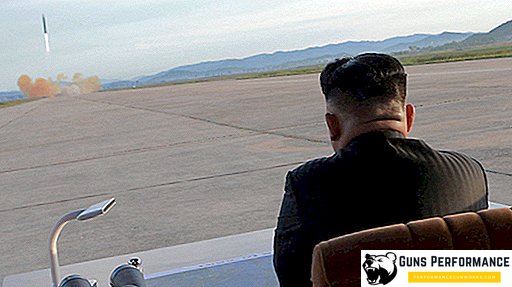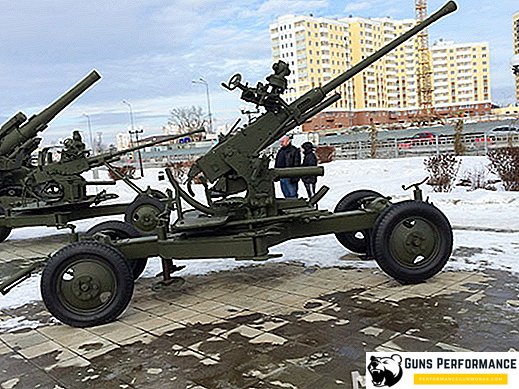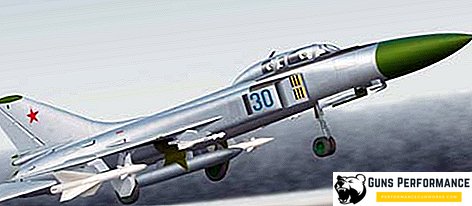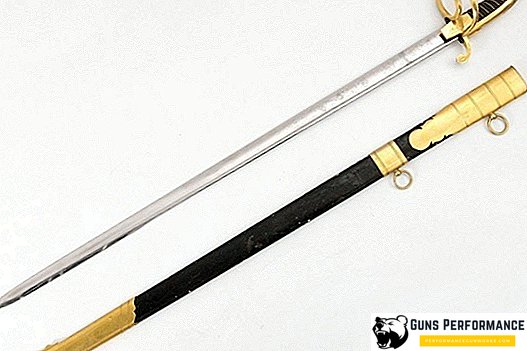
In the past ten years, many feature films and TV series have been shot about counterintelligence of the SMERSH. The truth on the screen is intertwined with fiction and fantasy directors. In fact, SMERSH consisted of three organizations under a common name. Despite attempts to blacken the Soviet counterintelligence SMERSH, the facts stubbornly say that it not only surpassed Abwehr, Zeppelin, SSI and other intelligence organizations of Germany, Romania, Finland and Japan, but was also able to completely defeat them.
The structure of counterintelligence SMERSH
The SMERSH organization was formed on April 19, 1943. The abbreviation stands for "death to spies." From the composition of the NKVD were transferred to the People's Commissariat of Defense three divisions of special departments (DOE):
- The DOE itself, on the basis of which the SMERSH GUKR was organized under the leadership of Viktor Abakumov;
- The naval department of the NKVD under the leadership of Gladkov was reorganized into the Smersh NK Navy;
- The 6th department of the NKVD DOO was called "Smersh" of the NKVD. This division was led by Yukhimovich.
The head of SMERSH Abakumov, whom Stalin greatly favored, succeeded in turning the unit entrusted to him into an agency with enormous power and influence.
The tasks that military intelligence SMERSH had to solve

When the office was only created, it had to solve the following tasks:
- Opposition to foreign intelligence agents in the Red Army;
- Prevention of sabotage, terrorist acts and the recruiting activities of foreign intelligence officers;
- Creating an impenetrable barrier to prevent the penetration of enemy agents and scouts;
- The fight against deserters, simulators and traitors among the soldiers of the Red Army;
- Verification of all persons who have been in captivity or in the territories occupied by the enemy.
The so-called "intelligence" war on the Eastern Front was fought by about 130 different sabotage schools and foreign intelligence organizations. Schools were engaged in the preparation of agents for casts on the territory controlled by the USSR. The preparation was quite serious, the agents were even forced to learn local dialect words.
The activities of the enemy intelligence services in the USSR and the occupied areas
Back in 1941, the German command created the Abwehr intelligence service abroad for reconnaissance, sabotage and counterintelligence in the USSR. Abwehr agents disguised as soldiers of the Red Army committed acts of terrorism and set up the local population against Soviet power.

In the occupied territories, the Abvershtelle reconnaissance body was formed, which was engaged in identifying guerrillas, underground fighters, and simply people who spoke negatively about Nazi Germany. In large cities there were separate units, which were called Abvernebenshtelle, and in small cities - Ausenstelle. There are legends that for one careless word to the address of the new regime they shot without trial.
According to the official data of the Soviet newspapers of the time, the SMERSH counterintelligence officers during the war were able to declassify more than 30 thousand Abwehr agents, 3.5 thousand saboteurs and about 6 thousand terrorists. In fairness, it is worth noting that not all Abwehr agents were real, many were victims of slander.
Operation "Monastery"
There are numerous legends about SMERSH, but it is silly to deny the effectiveness of his work. In the summer of 1941, Soviet intelligence officers launched a long-lasting operation “Monastery”, which lasted throughout all the years of the war, and is still considered a benchmark. This operation was included in all textbooks for intelligence officers, which serve as a guide for modern intelligence schools.
The "legend" of the entire operation was to make German intelligence believe in the existence of an anti-Soviet monarchist organization, whose headquarters is in Moscow and has considerable strength. For the credibility of the legend, it was decided to use the "blind" former nobleman Boris Sadovsky. Having lost his land and title with the advent of Soviet power, he hated it. Being disabled, he wrote poems in which he glorified the German invaders, asking them to quickly free the Russian people from the hated Soviet power. Sadowski himself repeatedly tried to contact German agents, which was used by Soviet intelligence officers.

Aleksandr Demyanov, an employee of Lubyanka, recruited in 1929 by the OGPU, was chosen to communicate with Sadovsky. A descendant of the Cossack chieftain and princess, Demyanov grew up and was raised abroad. Possessing a pleasant appearance and aristocratic manners, he quickly gained confidence in the monarchist Sadovsky and helped him create the anti-Soviet organization, the Throne.
In February 1942, Demyanov surrendered to the fascists under the guise of a representative of an anti-Soviet organization. To the Abwehr officer who arrived for the proceedings, he said that he had been sent from the “Throne” organization to communicate and receive instructions for action from the German command.
Demyanov was subjected to harsh interrogation, checks and provocations, but he firmly adhered to his legend. A huge role was played by the fact that even before the war, German spies brought Demyanov to the lists of possible candidates for engaging as an agent. Shortly after learning the basics of espionage, the double agent Demyanov was abandoned in the Rybinsk region, where he was to conduct reconnaissance. The monarchist organization "The Throne" was supposed to engage in propaganda among the population, with the aim of sabotage and sabotage.
After waiting for the time, SMERSH arranged his scout as a liaison officer under Marshal Shaposhnikov.
The unsuspecting Germans were very proud of having their own man at the headquarters of the Soviet command. For two years, Demyanov passed on disinformation, which allowed the arrest of 23 German agents and their accomplices. About 2 million USSR money, weapons and important documents were seized.
In 1944, Operation Monastery continued under the name Berezino. Demyanov, who was sent to Minsk, said that in the Belarusian forests there are large groups of German soldiers and officers who are trying to get out of the encirclement. According to him, the "Throne" is trying to help them, but is limited in means and opportunities. German intelligence sent three connections to obtain accurate information. Two of them were recruited, after which, according to their data, an uninterrupted stream of assistance to the “surroundings” went to the Belarusian forests. Along with weapons and food, new agents were also sent in order to clarify data on German units penetrating the front line. However, Special Forces Smersh and intelligence officers worked so cleanly that the goods were regularly sent until the end of the war. The last farewell telegram from the Abwehr came a few days after the capture of Berlin. It stated with regret that it was no longer possible to provide assistance.
SMERSH: repression or intelligence?

Many modern sources assert that during the war years SMERSH was engaged not so much in intelligence and counterintelligence as in repression among the civilian population of his country. These sources claim that the slightest suspicion of espionage (or the denunciation of a vigilant neighbor) was enough for a person to be arrested or shot. According to various data, it is reported that the number of civilian arrests was about 700,000, and 70,000 of them were shot. In other sources, the number of those arrested is increased to several million, 25% of which were shot.
Since the investigation in wartime was difficult enough, some tend to believe these documented and unconfirmed sources.
Barrier events since the Second World War

Barriers were during the Second World War were very popular and were created to maintain order. Contrary to popular belief, SMERSH employees did not create them, but simply worked with them, never leading them.
Barrage services helped to identify deserters, alarmists and saboteurs. Before the start of the offensive, the SMERSH officers were scouring woodlands, dugouts and non-residential premises. It was there that saboteurs and other agents of the Abwehr often hid. Often, during these operations, servicemen with suspicious documents were arrested.
Naturally, in military conditions there were also errors, but their number was small in percentage terms. Allocated to the right of arrest of deserters and spies, SMERSH officers, when caught, transferred them to military tribunals. Only in the case of resisting suspicious individuals were shot.
SMERSH counterintelligence officers spent most of their time in the Red Army units that were fighting. Their participation in the battles is documented and beyond doubt.
Filtering work SMERSH after the war
After the war ended on January 6, 1945, repatriation departments began to be created at headquarters, in which all prisoners of war and civilians released from the camps were checked. As a result of this work, several thousand spies were found, tens of thousands of punishers and their accomplices. It is possible that among them was a small percentage of innocent people, but millions of honest Soviet people officially got rid of the stigma of a traitor to their homeland.
Nuances of work and personal equipment of SMERSH employees

The main enemies of SMERSH were the German Abwehr intelligence service, the RSHA and the Finnish intelligence service. Despite the high degree of training, the operatives on average served about three months, after which they dropped out due to death or severe injury. Naturally, someone served all three years of the existence of SMERSH, and someone was killed in the first days at the front. The mortality of the scouts during the war was very high. Many are missing.
For a more rapid identification of enemy agents in combat units, an officer of SMERSH was attached to each unit, who conducted business on those fighters who had problems with the law in the past or had a "dark" biography and origin.
Since the officer with a gun looked suspicious, SMERSH operatives were armed with pistols. These were mainly Nagant, TT, Walter and Lugger. For special undercover operations, the Lignose sabotage small-sized pistol was often used.
In general, the history of SMERSH shows how important it is for the state to have an effective intelligence intelligence service, which is engaged not only in intelligence, but also in sabotage activities in the rear of the enemy.
SMERSH activities after the war
The main task of SMERSH after the end of the war was to identify the agents of foreign intelligence services in the USSR. In addition, many "policemen" dispersed throughout the Soviet Union in the hope of hiding from the anger of the people. May 12, 1945 was carried out large-scale operation to clean up the rear. S7 divisions, in each battalion of which there was a SMERSH operative, passed a huge territory with an expanded chain. Thanks to such operational measures, many accomplices of the Nazis were arrested and handed over to the judicial authorities.
Recent military action SMERSH
In the summer of 1945, the Soviet army launched an operation to defeat fascist Japan. The Manchurian offensive was conducted from August 9 to September 2, 1945.
SMERSH employees, who have accumulated vast experience during the war years, have used their full potential. With lists of persons who were to be searched and arrested, SMERSH operatives captured the headquarters of the Japanese police and spy organs. On the territory of Manchuria, many existing White-Immigrant organizations were identified that collaborated with enemy intelligence.
After the defeat and surrender of Japan, in China, Korea and Manchuria, many hidden agents of the Japanese special services and various foreign intelligence agents remained. SMERSH employees actively participated in their search using their extensive network of agents.

The Counter-Intelligence Directorate "SMERSH" NPO existed on the world stage for three years. Despite the short time, the department was able to achieve great success in reconnaissance and sabotage. SMERSH scouts were able to surpass the German intelligence organizations that were considered the best at the time. Many SMERSH employees were awarded the title Hero of the Soviet Union (some posthumously), and the Soviet school of intelligence became the benchmark on which all the special services of the world were equal.


